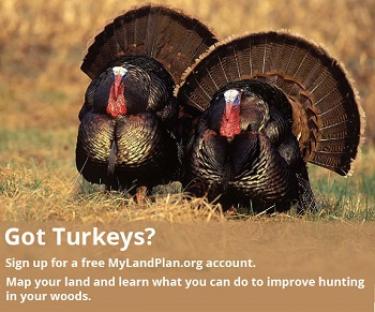Wild Turkeys
The wild turkey (Meleagris gallopavo) has a firm hold on the American imagination, tethering us to the past and symbolizing a season of plenty. And as hunters such as Salem Saloom of southern Alabama will tell you, there’s nothing like a spring turkey hunt, when the woods are ringing with the sound of mature gobblers.
Salem has been hunting with friends on the opening day of the spring turkey hunt for the past 19 years. “Turkey hunting isn’t about the harvest or the kill. It’s about the camaraderie, it’s about the story you bring back, it’s about the hope of hearing a wild turkey gobble in the woods, it’s about being out in nature,” he says.
Today, wild turkeys number about 7 million -- up from an all-time low of 30,000 birds in the 1920s, caused by habitat loss and overhunting. This conservation success is largely due to habitat restoration and trapping and transplanting birds into suitable habitat, activities that have been supported by hunting taxes.
Wild turkey are cautious birds that can run up to 25 miles per hour (mph), fly up to 55 mph and make use of a range of vocalizations to communicate with others in the flock. For these reasons, they are challenging to hunt. Turkey populations also tend to fluctuate over time, which makes them a challenge to manage. However, it is possible to attract and sustain a turkey flock, provided you accommodate its needs.
The Basics
- Food: Turkeys are omnivores that eat grass and forbs, especially young, tender green vegetation, as well as fruit, nuts and insects. They will also eat grain from farm fields.
- Cover: Although turkeys use forested areas as cover and for roosting in trees at night, they use open, brushy areas for feeding, mating, nesting and rearing their young. So a mix of open fields and pasture and forested land is essential for their survival. Turkeys tend to roost in mature, large-diameter hardwood trees.
- Water:Turkeys need water almost daily, so hens rarely nest far from a reliable water source such as a creek, spring, seep or pond.
- Space: A good-quality habitat will support one bird per 30 acres (one flock per 640 to 800 acres). But because turkeys need a lot of living space, they may not remain on your property year-round unless it’s 1,000 acres or more.
How can I get more tips?
It’s simple! Enter your email below.

